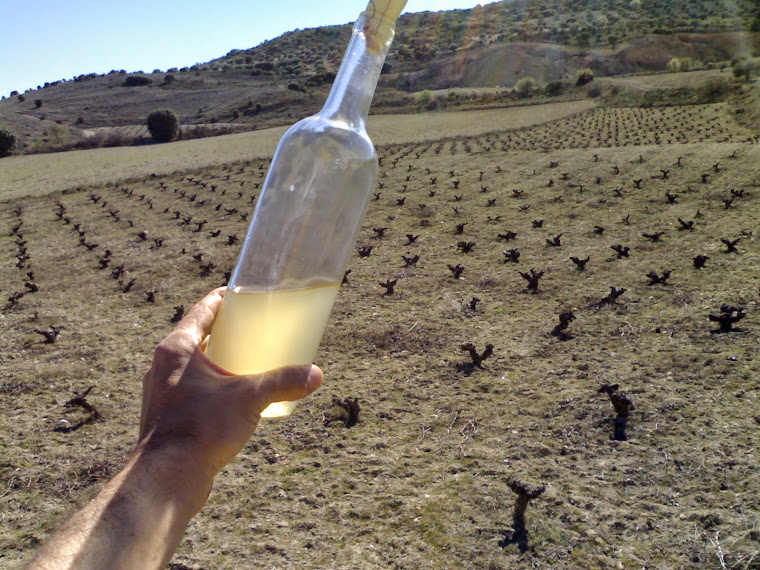
Last Sunday (8 November 2009) I was in the vineyard (Carabaña, Spain) bright and early, as I wanted to make a detailed map, showing the state of each individual vine. I didn't have time to finish but I did manage to map out about 600 vines or so, ie about half the number of vines in the vineyard. On my map I marked:
1. Vines that are OK (with a dot)
2. 'Wild' vines (with an 'S') (Salvaje = wild in Spanish)
3. Dead vines (with an 'M') (Muerto = dead)
4. Spaces where there is no vine (with a 'na') (nada = nothing)
'Wild' vines means that at some point in the past (before we took over the vineyard 6 years ago) the vinifera insert did not take and the rootstock itself sprouted. These need to be pruned way back and grafted again with a vinifera variety.
(pending photo of 'wild' vine)
(sorry, Blogger is having problems with umploading images)
Dead vines need to be uprooted and replanted
(pending photo of dead vine)
Empty spaces with no vine also need to be replanted.
(pending photo of empty spaces)
The time to do this is around March/April when the sap is just starting to flow, but not too much. The top priority is to plant new vines in the empty spaces; second priority is to uproot the dead vines and plant new vines, and third (if there is time and money leftover!) to prune and graft the wild vines.
After that, it was off to the winery to meet Juan for a preliminary tasting by ourselves, before letting the experts loose on our wines. We had eight (8) different wines to taste this year:
1. Young white 2009 (100% Airén) - Lot I
2. Young white 2009 (100% Airén) - Lot II (same as above, but grapes harvested 2 weeks later)
3. Young red 2009 (100% Garnacha/Grenache) Carbonic Maceration
4. Young red 2009 (100% Garnacha/Grenache) Conventional fermentation
5. Young red 2009 (100% Tempranillo) Conventional fermentation
6. Young red 2009 (100% Cabernet Sauvignon) Conventional fermentation
7. Crianza 2008 (100% Tempranillo, 6 months in oak barrel)
8. 'Young' red 2008 (100% Tempranillo)
(pending: our tasting notes)
 Coupage (Tempranillo and Garnacha) in action
Coupage (Tempranillo and Garnacha) in action
 Spontaneous and appropriate vine around the door (of Vinos Ambiz Organic and Sustainable Winery)
Spontaneous and appropriate vine around the door (of Vinos Ambiz Organic and Sustainable Winery)
We didn't actually plant the vine on purpose. It must have sprouted sponaneously one year from a stray pip during the crushing. We noticed it at some point and we trained it round the door. The rest of it is posing on a crate at the moment until we get round to training it all over the wall and maybe even make a shady pergola one year.



























